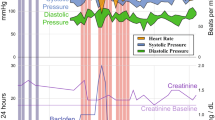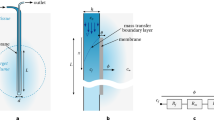Abstract
Objectives: To report an unusual cause of intrathecal drug delivery failure in baclofen pump device.
Study design:A case report of an SCI patient treated with intrathecal baclofen, presenting a drug withdrawal.
Setting: Regional spinal cord injuries centre in Geneva (Switzerland).
Methods: We present a case of a 38-year-old male with complete T9 spastic paraplegia for 15 years, treated with intrathecal baclofen for 11 years. He recently presented to our centre with a spastic hypertonic episode, associated with rhabdomyolysis.
Results: Standard investigations were unrevealing. However, a CT scan performed after injecting a radio-opaque solution by the side port of the pump, showed an unexpected catheter migration into the subdural space. Surgical revision reversed withdrawal symptoms.
Conclusions: Subdural catheter migration must be considered in the differential diagnosis of intrathecal drug delivery system failures. We recommend the use of the CT scan after contrast injection, to detect the localization of the distal catheter tip and confirm the normal diffusion into the subarachnoid space.
Similar content being viewed by others

Log in or create a free account to read this content
Gain free access to this article, as well as selected content from this journal and more on nature.com
or
References
Sköld C, Levi R, Seiger A . Spasticity after traumatic spinal cord injury: nature, severity and location. Arch Phys Med Rehabil 1999; 80: 1548–1557.
Maynard F, Karunas RS, Waring WP . Epidemiology of spasticity following traumatic spinal cord injury. Arch Phys Med Rehabil 1990; 71: 566–569.
Penn RD . Intrathecal baclofen for spasticity of spinal origin: seven years of experience. J Neurosurg 1992; 77: 236–240.
Coffey RJ et al. Intrathecal baclofen for intractable spasticity of spinal origin: results of a long-term multicenter study. Neurosurgery 1993; 78: 226–232.
Azouvi P et al. Intrathecal baclofen administration for control of severe spinal spasticity: functional improvement and long term follow-up. Arch Phys Med Rehabil 1996; 77: 35–39.
Parke B, Penn RD, Savoy SM, Corcos D . Functional outcome after delivery of intrathecal baclofen. Arch Phys Med Rehabil 1989; 70: 30–32.
Kravitz HM et al. Intrathecal baclofen. Effects on nocturnal leg muscle spasticity. Am J Phys Med Rehabil 1992; 71: 48–52.
Penn RD, York MM, Paice JA . Catheter systems for intrathecal drug delivery. J Neurosurg 1995; 83: 215–217.
Schurch B . Errors and limitations of the multimodality checking methods of defective spinal intrathecal pump systems. Case report. Paraplegia 1993; 31: 611–615.
Le Breton F et al. Radioisotopic control for baclofen pump catheter failure. Spinal Cord 2001; 39: 283–285.
Akman MN et al. Intrathecal baclofen: does tolerance occur? Paraplegia 1993; 31: 516–520.
Reeves RK, Stolp-Smith KA, Christopherson MW . Hyperthermia, rhabdomyolysis, and disseminated intravascular coagulation associated with baclofen pump catheter failure. Arch Phys Med Rehabil 1998; 79: 353–356.
Terrence CF, Fromm GH . Complications of baclofen withdrawal. Arch Neurol 1981; 38: 588–589.
Al-Khodairy AT, Vuagnat H, Uebelhart D . Symptoms of recurrent intrathecal baclofen withdrawal resulting from drug delivery failure. Am J Phys Med Rehabil 1999; 78: 272–277.
Author information
Authors and Affiliations
Rights and permissions
About this article
Cite this article
Pasquier, Y., Cahana, A. & Schnider, A. Subdural catheter migration may lead to baclofen pump dysfunction. Spinal Cord 41, 700–702 (2003). https://doi.org/10.1038/sj.sc.3101536
Published:
Issue date:
DOI: https://doi.org/10.1038/sj.sc.3101536


